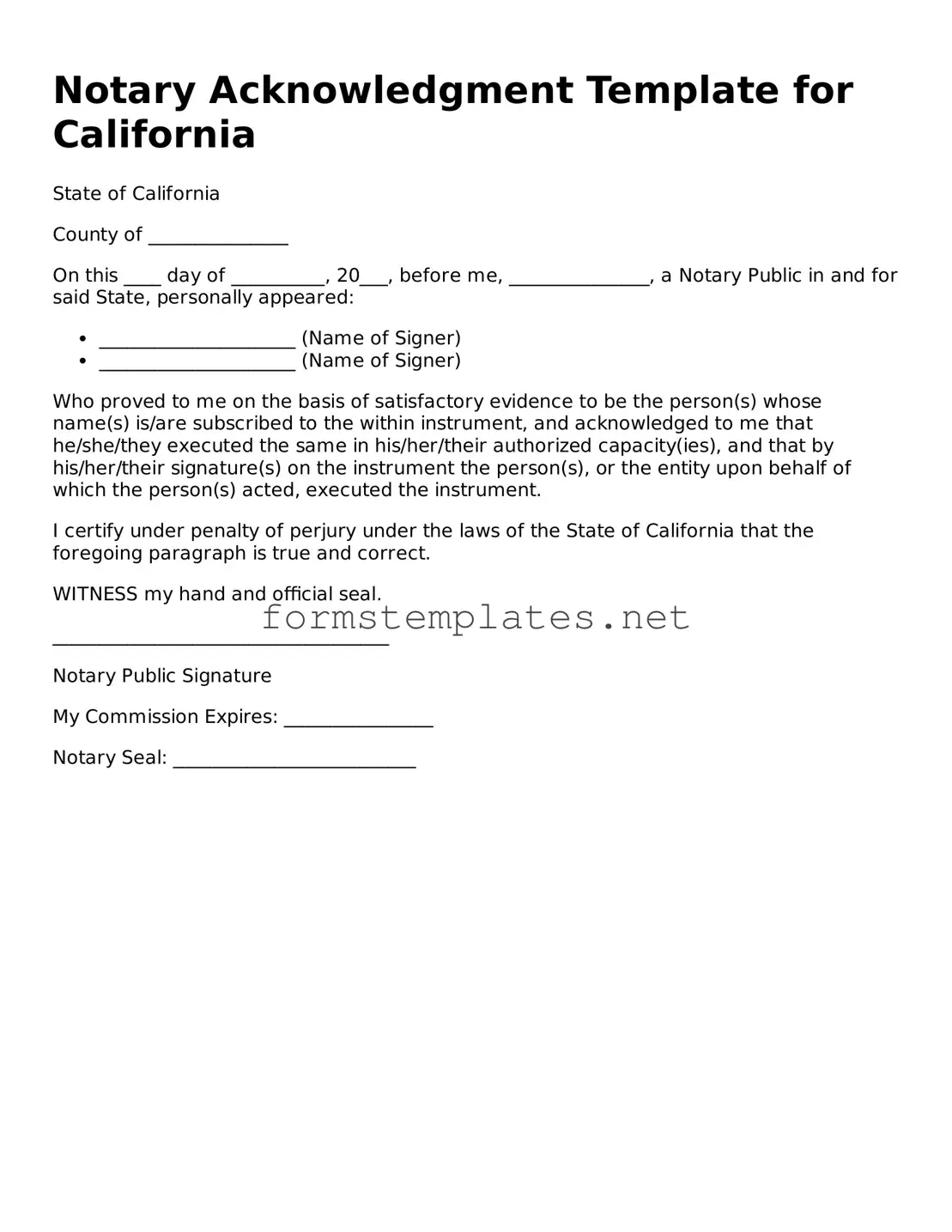Notary Acknowledgment Template for California
State of California
County of _______________
On this ____ day of __________, 20___, before me, _______________, a Notary Public in and for said State, personally appeared:
- _____________________ (Name of Signer)
- _____________________ (Name of Signer)
Who proved to me on the basis of satisfactory evidence to be the person(s) whose name(s) is/are subscribed to the within instrument, and acknowledged to me that he/she/they executed the same in his/her/their authorized capacity(ies), and that by his/her/their signature(s) on the instrument the person(s), or the entity upon behalf of which the person(s) acted, executed the instrument.
I certify under penalty of perjury under the laws of the State of California that the foregoing paragraph is true and correct.
WITNESS my hand and official seal.
____________________________________
Notary Public Signature
My Commission Expires: ________________
Notary Seal: __________________________
